The Future Planning Curriculum, below, was developed by Gregory Sale for use by other teaching artists working in prisons and, in some cases, for mailing directly to incarcerated individuals. Cuong Tran created his future ID using this guide. You can find his ID here.
Invitation to join us for a Future IDs workshop
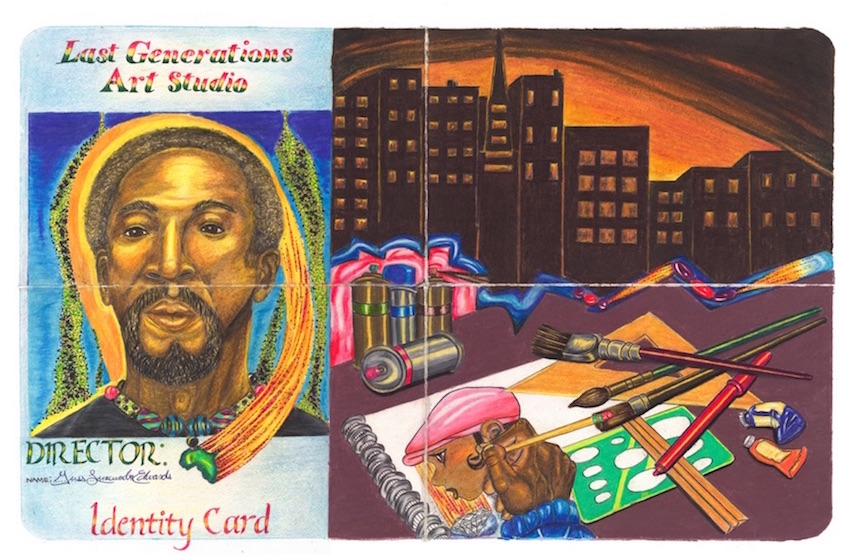
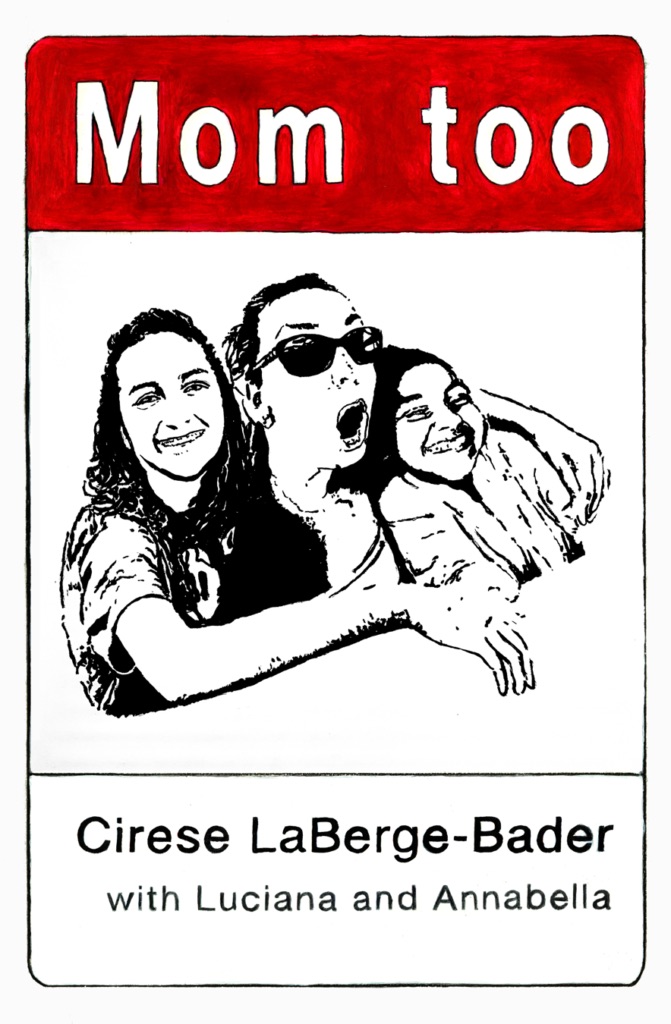
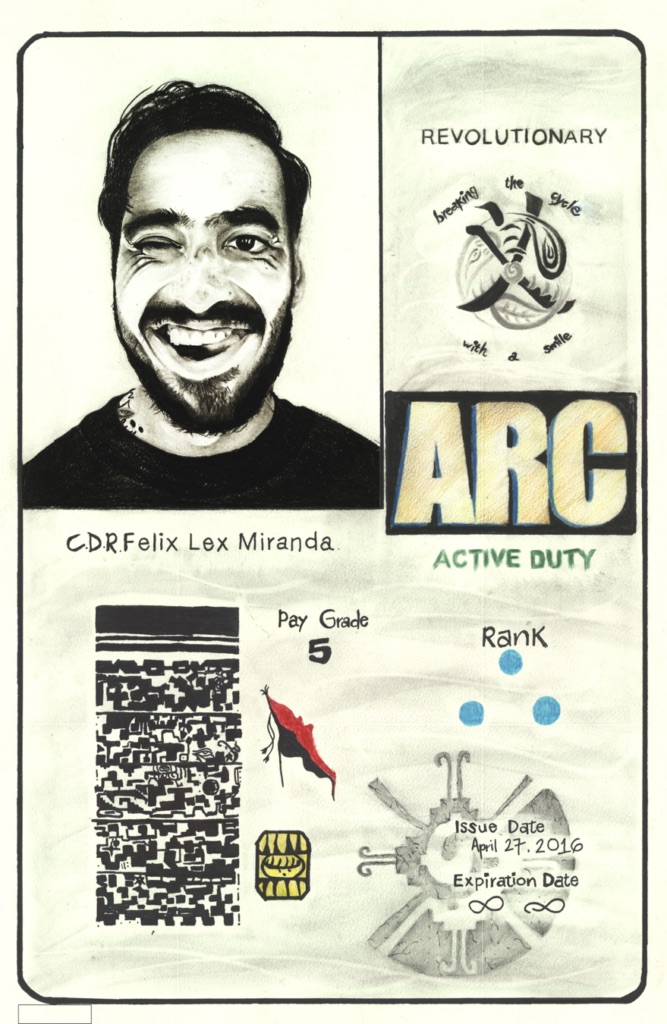
Future IDs is a collaborative art project about individual stories of transformation and how those stories collectively can help improve the experience of re-entry.
Workshop participants imagine a future self — for a dream job, a role in society, or a continuing role with family, such as father or mother. They then create an ID-inspired artwork on a large scale. These artworks express self-created identities, in stark contrast to prison-issued IDs. Participants may contribute their artwork, or a version of it, to the Future IDs project for exhibitions and public programs to help communities see re-entry in a new way.
Opening in Fall 2018 at the iconic prison-turned-national park in San Francisco Bay, Future IDs at Alcatraz will be a year-long exhibition featuring ID-inspired artwork by men and women with conviction histories.
This is a self-determined ID. You are your own authorizer. How do you want to be authenticated? How do you want to be seen or known? Past workshop participants have discussed the bravery required of formerly incarcerated persons to aspire to professions that some might consider impossible to achieve.

All future IDs are made on paper. Jonathan Daniel started his process by tracing a design he created in part on the computer. He then used a photograph as a basis to paint a self-portrait and asked artist friends to help him.
Future IDs at Alcatraz
Future IDs was co-created with people honing their ability to succeed after incarceration, and is rooted in a desire to make that transition easier for others. Future IDs was designed by artist Gregory Sale working in collaboration with Dominique Bell, Dr. Luis Garcia, Jose Gonzalez, Kirn Kim, Aaron Mercado, and Ryan Lo – all members of the Los Angeles-based Anti-Recidivism Coalition.
Over several years, the group has come together to consider stigma and social beliefs impacting those who have been incarcerated. They studied everyday images of incarceration. They discussed what it might mean to take ownership of those images by creating their own. They then considered the power of those images and investigated how to harness that power to positively shift the narrative of re-entry.
Future IDs at Alcatraz will be realized in partnership with the Anti-Recidivism Coalition, the William James Association/Prison Arts Project, National Park Service, Golden Gate National Parks Conservancy, Fort Mason Center for Arts and Culture, Montalvo Arts Center, Headland Center for the Arts and others. The year-long art installation will be accompanied by a series of monthly public programs and workshops created in partnership with local organizations and communities.
In July 2018, the LA Weekly published an article about the upcoming Future IDs project. You can view at: https://www.laweekly.com/arts/future-ids-a-new-art-exhibition-reimagines-a-talisman-of-institutional-power-9607488
For more information, contact: Gregory Sale <gregory.sale@asu.edu> or Dr. Luis Garcia <lsgarci@mac.com>
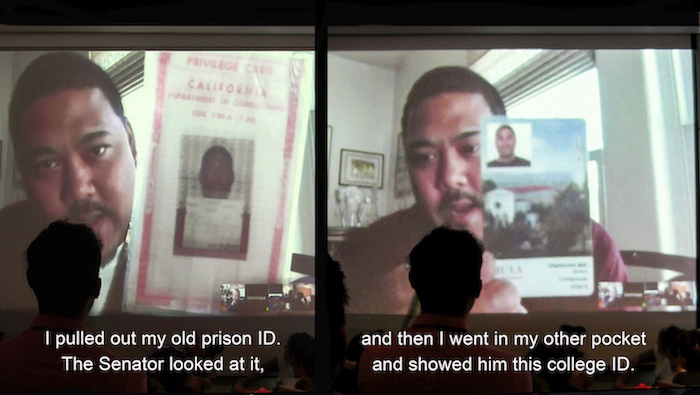
Future IDs came about in part because of experiences like the one Dominique Bell had when he sat down with a state senator to advocate for criminal justice reform.
I said, “Listen, you don’t have a lot of time. I just want to show you something.” And I reached into my pocket and pulled out my old prison ID. He looked at it, and then I went in my other pocket and showed him this college ID. And so I said to the Senator, “This is the different side. That is the difference.” And he responded, “Enough said.”
—Dominique Bell, Future IDs project collaborator
Creating Your Own Future ID
ID cards are documents that verify a person’s identity and qualifications. ID cards include a photograph (typically a headshot) and provide identifying data, such as name, age, or organizational membership.
In using an identification card as a basis for artmaking, we want to consider:
- What is an ID and what is its purpose? How does it function?
- Why would you need an ID? In what situations? Is an ID bad or good?
- A prison ID is assigned to a person and has a negative connotation.
- What would be a positive way to identify oneself?
- What do you want people to know about you? What are your goals in life?
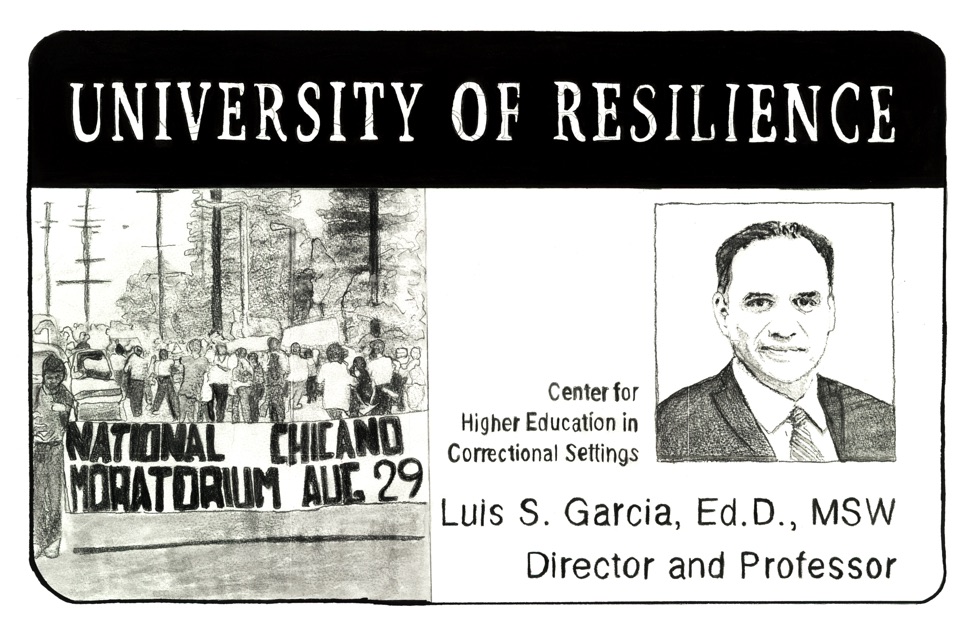
The project really allowed me to untangle all that shame and stigma and really liberate myself.
— Dr. Luis Garcia, core project collaborator
Dr. Luis Garcia completed his high school diploma while incarcerated in the LA County jail. In 2017, he earned a doctorate in Educational Leadership for Social Justice from Loyola Marymount University. Towards the end of his artmaking process, he came up with the idea for the University of Resilience.
Your Future Self
If you don’t have a goal to strive for, then where’s your focus? You are going to go home eventually. What do you want to be when you get out? That’s what it is. For too long the inmate ID is what defined us. You are here to write your future. What you’re going to build your legacy toward? So what ID do you want?
– Kirn Kim, core project collaborator
Do you have a sense of what might be important for you in creating an artistic identity card? Is it for a job? Or is it for a role in society or in family?
Figuring out what you want to be is not necessarily easy. It’s a journey, and it’s okay if you begin with one idea or no idea and struggle and push forward until you figure it out.
Everyone’s journey is different, so the best way to approach the creation of your identity is to ask and answer questions, questions that take you back to your childhood, when you began to build your identity. The questions on the next page will help you dig into this.
What will you be?
Create an identification cards for a future self – perhaps for a dream job, a role in society, or a continuing role with family, such as father or mother.
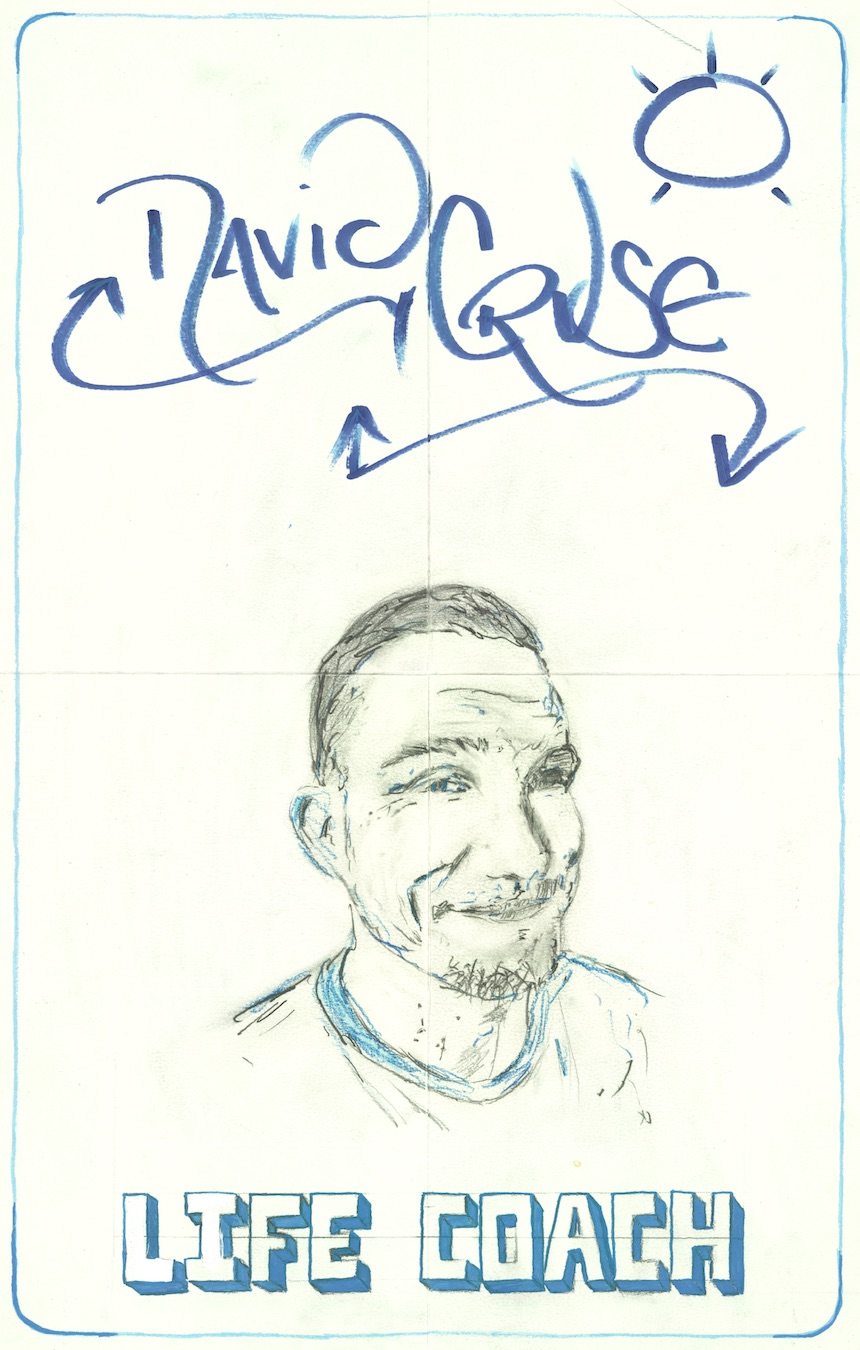

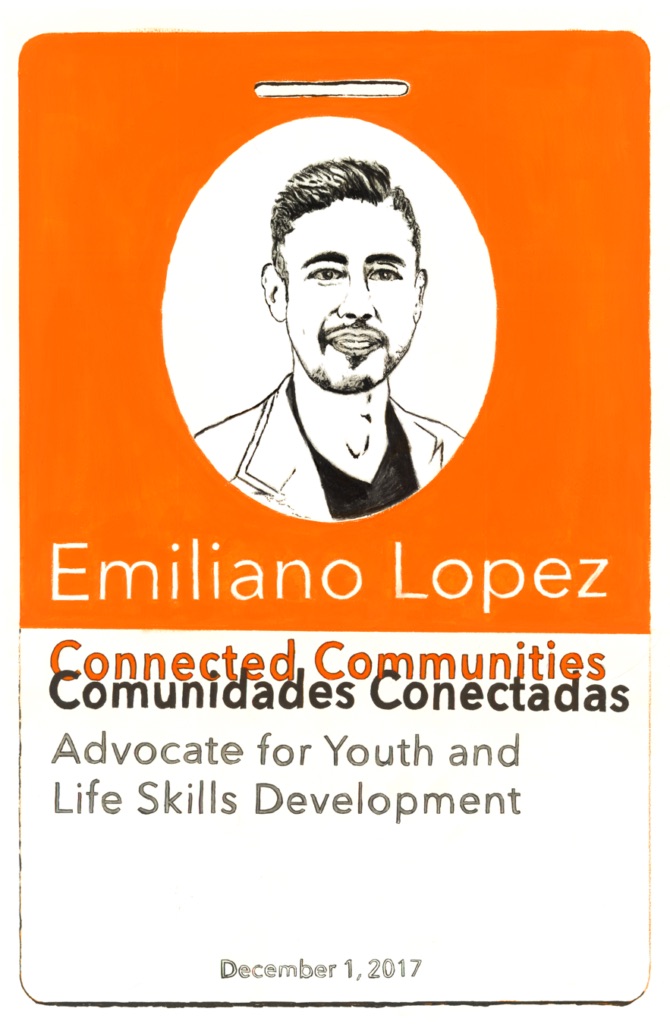
Your future ID could look a lot like a standard ID for a job or a school. It could also include symbolic imagery and formatting that uses the structure of an ID as a starting point to speak more specifically about your life and goals.
Start exploring
Your future identity
What are you passionate about?
List 3 things that you loved to do as a child:
1.
2.
3.
Maybe write down 2 or 3 things you disliked as a child:
1.
2.
3.
Do you have a sense of how you might incorporate your answers to these questions into a future vision for yourself?
Past Future IDs workshop participants, whose future goals had not crystallized yet, but who planned to get job training or go to college, decided to make student IDs for this project. Others, with expansive lists of possibilities for their future selves, focused on one revenue-earning job as first step towards their ambitions. Some spoke of the bravery required of formerly incarcerated persons to aspire to seemingly unachievable professions. Many made those ID cards anyway.
Designing Your Future ID
Create an ID-inspired artwork for your future self
Nothing is as consistently and effectively motivating as moving towards a goal that you want and can see. Creating a clear picture will help you clarify your priorities and enable you to create strategies for realizing your dreams.
– Colleen Keegan, Strategic Planning Training, Creative Capital Foundation
You are invited to draw, paint, collage, or reproduce your ID images, text, and design elements in any artistic way you choose.
WORKING LARGE
In contemporary life, ID cards are small, designed to fit into a wallet or worn around the neck. They have a standard small size, typically 3.375 inches by 2.125 inches. When artists re-create ordinary objects on a monumental scale, it changes their meaning and our relationship to them. When an ID is made large, its importance is emphasized, and one becomes more aware of the person associated with it.
For the Alcatraz exhibition, artworks will be reproduced and enlarged. It’s important to keep the proportion of a standard IDs so that the exhibition holds together visually and conceptually.

Creating a Future ID
Components of an ID card
Here are some of the standard components that would make your card believable:
Name:
Job title or role in life:
Company, group, or organization (this can be made up):
Date and location (optional):
ID cards often have company logos or background designs. Some have bar codes, signature panels, or smart card chips. Your future ID may also include an intention, mission statement, or goal.
One of the first decisions you will want to make is whether the ID is vertical or horizontal.
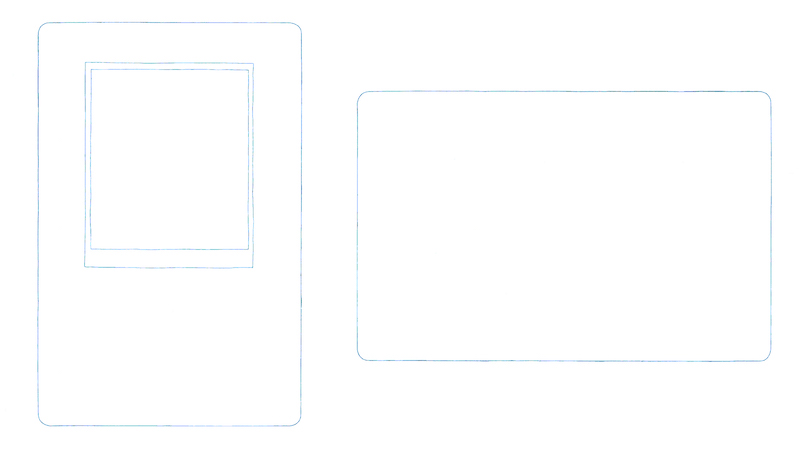
When we run a workshop each participant is given large sheets of multi-media paper with simple outlines of generic identification cards drawn on it with an architect’s blue-print pencil. If you are making your own, an ID-card outline size to use might be 20 ¼” x 12 ¾”.
Participants are working in a couple of different sizes of paper. Some sheets are pre-folded to fit into a standard, 9” x 12” envelope. That way the artwork can be sent in and out of prison mailrooms, and easily transported on the outside.
Creating a Future ID
PHOTOGRAPH TO SELF-PORTRAIT
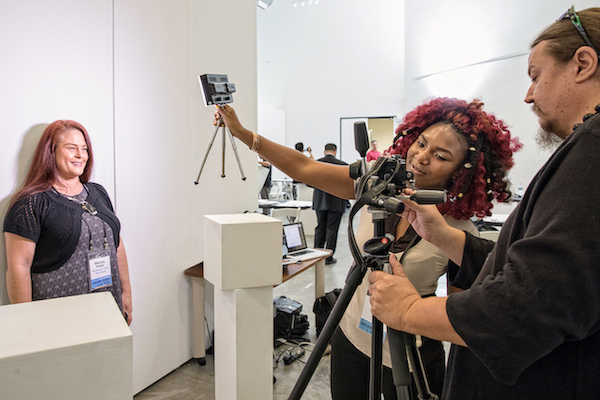
Keep in mind that an ID card is more than just a functional tool — it’s also an extension of your image and identity. How can you create images that express the self accurately and individually?
A photograph is a fundamental component of an identification card. A good photograph is not just a visual representation of a person, it is a portrait that tells us something about the person: their essence, place in society, or beliefs.
Since you are creating your own ID as art, consider:
– Do you want to look serious, hardened, sad, friendly?
– Are you dressed casually or professionally?
– Are you sitting or standing? Are you gazing out to sea? Pointing?
– Was the portrait taken indoors or outdoors, in a library or on top of a mountain?
Some people draw and paint really well. However, if you are more comfortable tracing, use a light table or a window. In the past, some people have used a phototransfer technique and others made a collage from pictures of themselves. Some made a trade with a friend to draw their portrait for them. Remember that excellence in drawing is not necessarily a standard in art; it is your vision for yourself which is most important.
Creating a Future ID
GRAPHIC DESIGN
As official or professional documents, ID cards usually have a clean and direct design. A simple typeface promotes easy readability. What you write on the card has to be clear.
Because you are enlarging a small object, maybe experiment with the design and scale. Some past participants found it helpful to back away from their ID-inspired artwork and look at it from across the room, making sure it was still readable.
Researching IDs online is a good way to explore possibilities, generate ideas and consider design options. If you don’t have access to the Internet or examples, design your new IDs creatively. The fun here is in being inventive, not in being exact.
SYMBOLIC IMAGES
Make a list of creative visual elements that best communicate your hopes and dreams (examples: tools of your trade, a paintbrush, a justice scale, books, a city scape, a mountain range).
Remembering that you only have so much room on your card, can you imagine ways in which you could design these symbolic images as a logo or background graphic to capture your passions?
EXAMPLES
It might serve you to research examples of existing ID cards from various professional fields. This can help with both content and design decisions. If you have access to the internet, this is fairly straightforward. (Some workshop facilitators may be able to provide a preselection of examples.)
Participants who cannot find specific resonant examples are encouraged to invent their new IDs creatively. The fun here is in being inventive, not about being exact.



As these in-progress designs demonstrate, your Future ID can include specific details about yourself or your aspirations, even if they don’t fit into a standard job title.
Your Future ID Artwork
COMPLETED ARTWORK
As a project participant, you are invited to make an ID-inspired artwork for your own benefit. You may also choose to contribute your artwork, or a version of it, to the Future IDs project for inclusion in exhibitions and public programs.
AGREEMENT
If you choose to donate your ID-inspired artwork to the project, you maintain © copyright of your artwork while granting an unlimited license for use in exhibition, promotional and educational purposes to the Future IDs project, artist Gregory Sale and their representatives. A release form will be provided.
Each exhibition opportunity will be unique. Not all artwork will be presented at every opportunity.
Individuals who create ID-inspired artwork, as well as community organizations who participate in the project and any related public programs, will be acknowledged in the exhibition signage and any media in print or on-line that features their specific contributions.


FutureIDs.com
We are currently developing a website for the project at http://futureids.com
Visit this site or contact: Gregory Sale <gregory.sale@asu.edu> or Dr. Luis Garcia <lsgarci@mac.com> for more information.